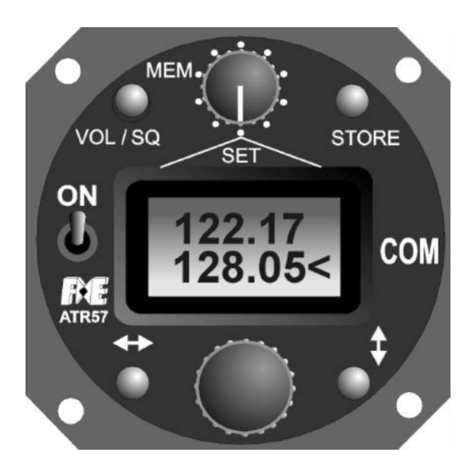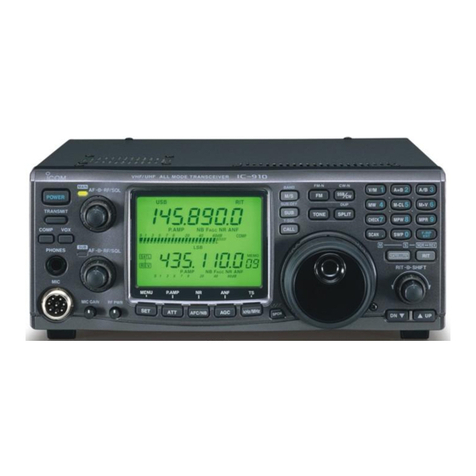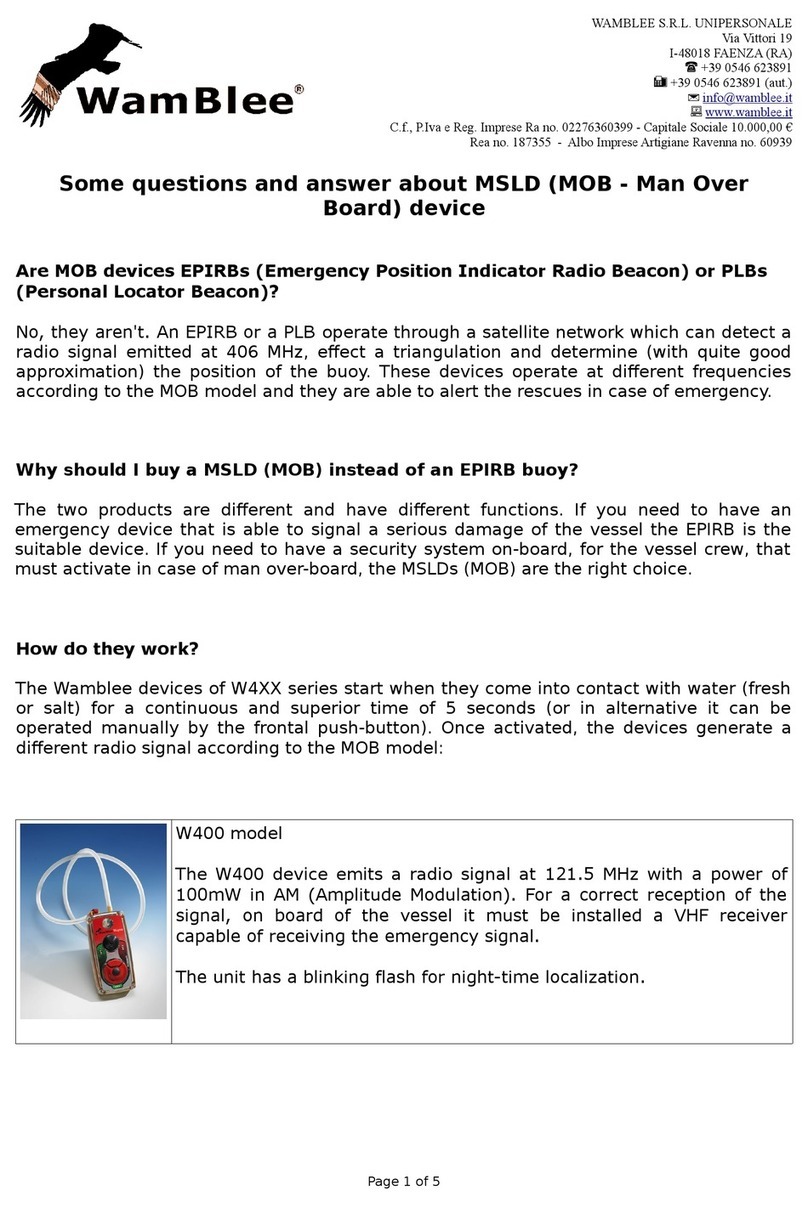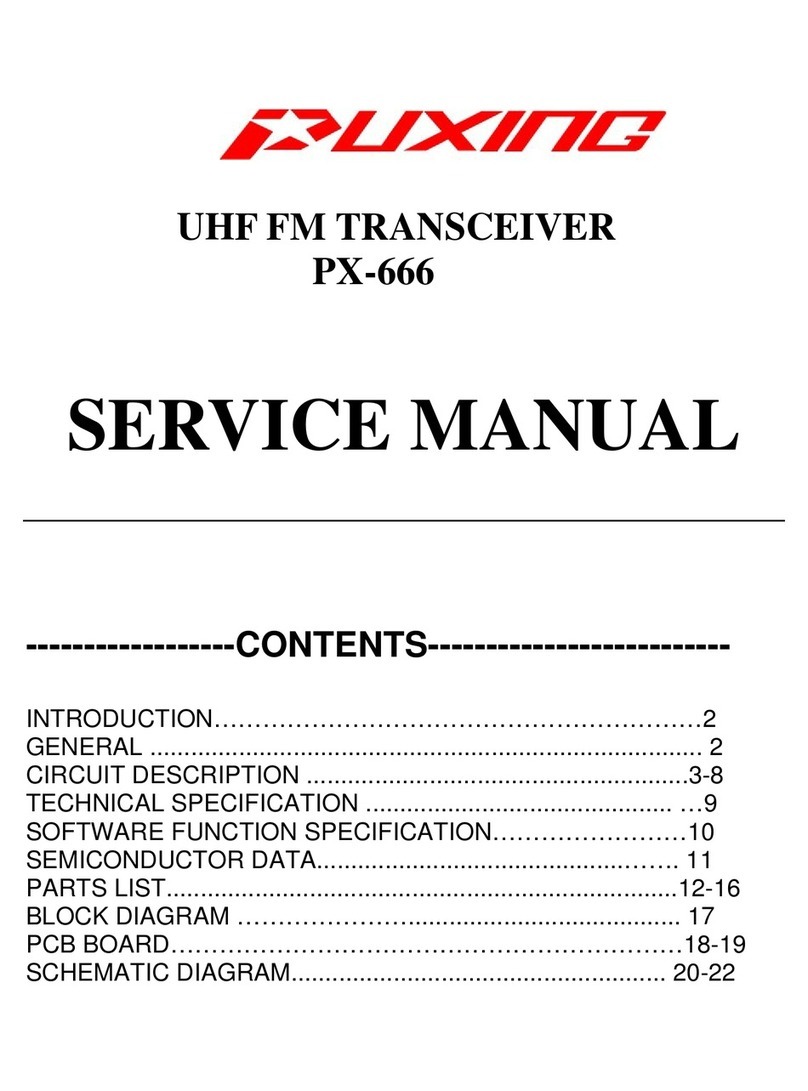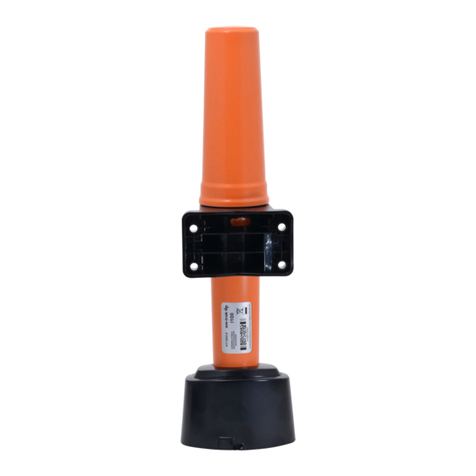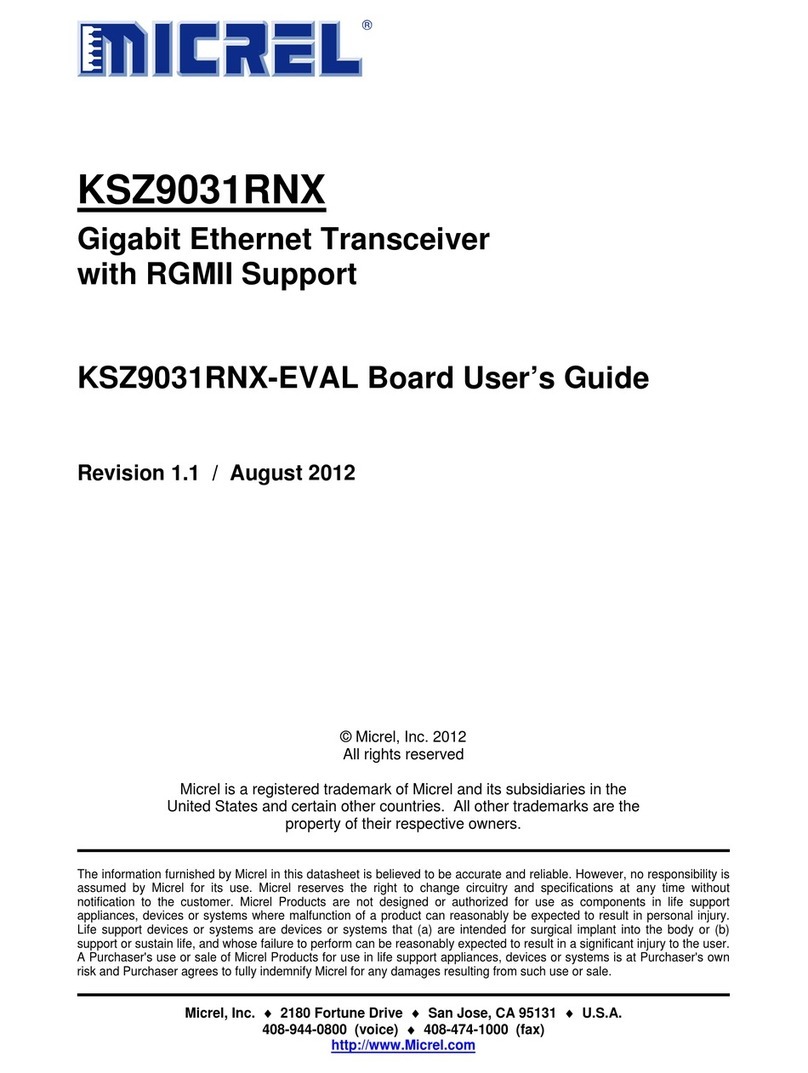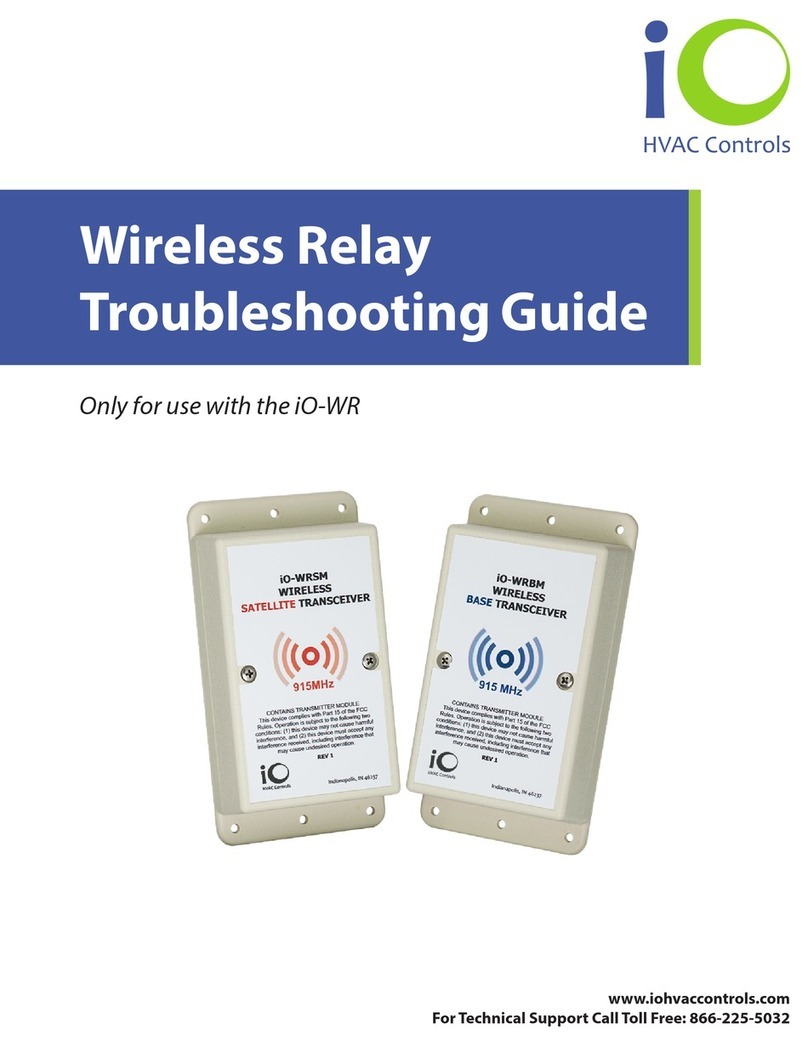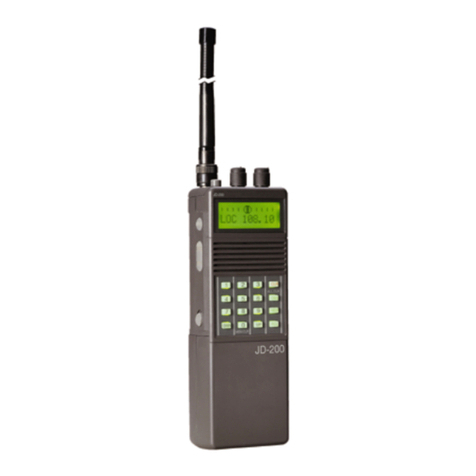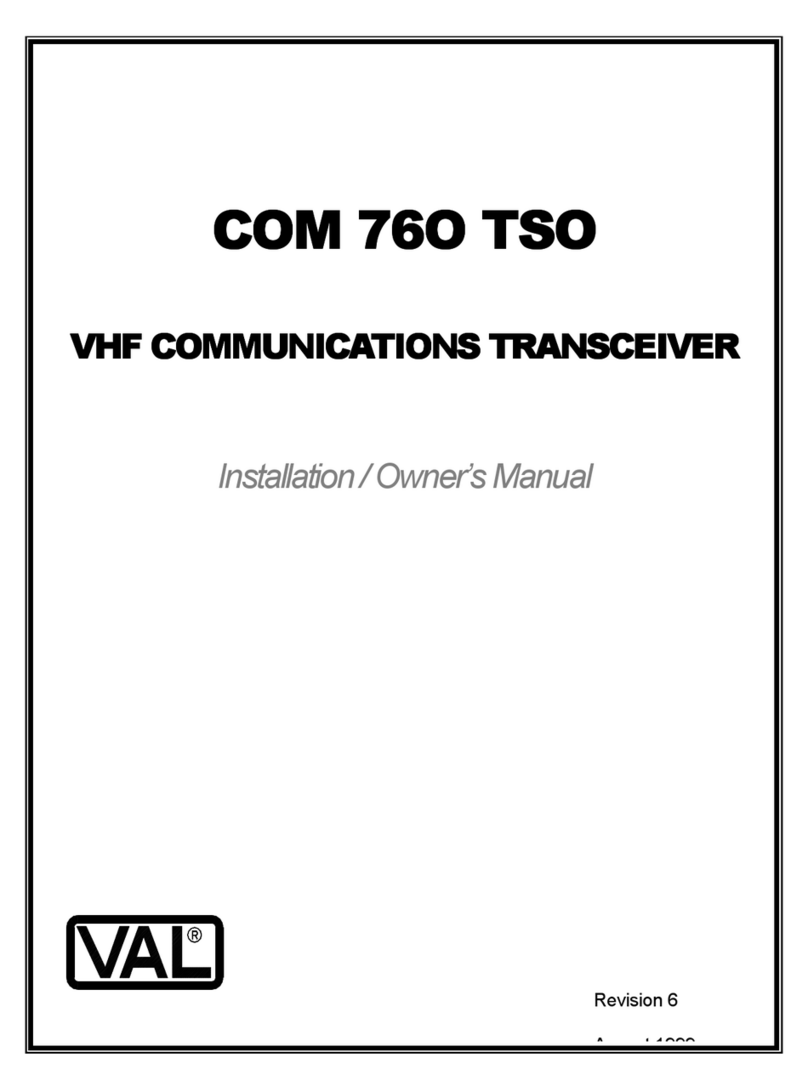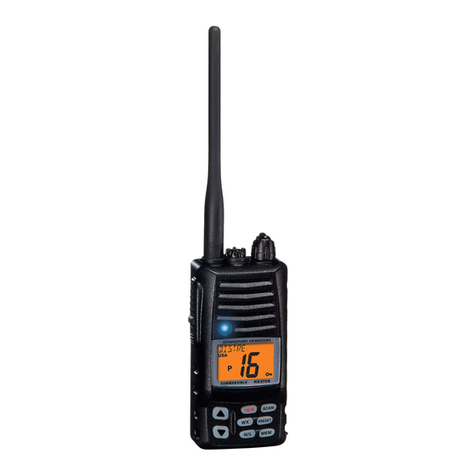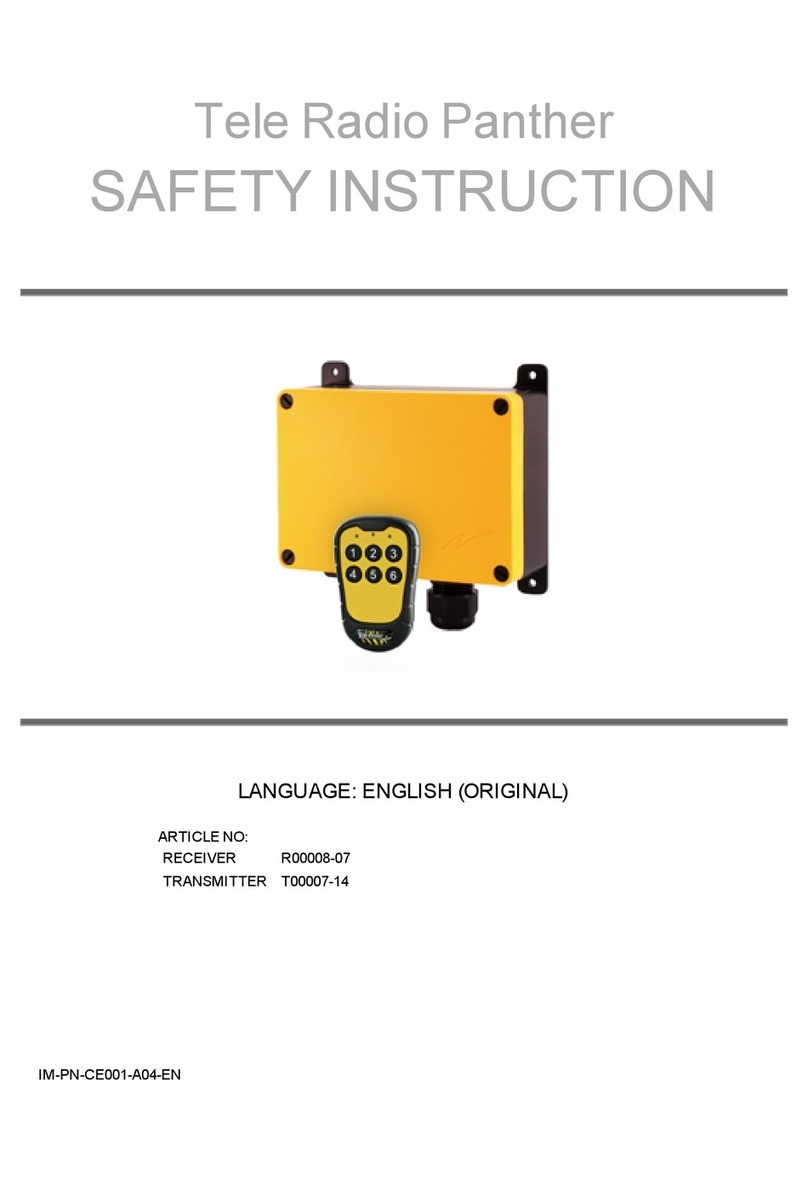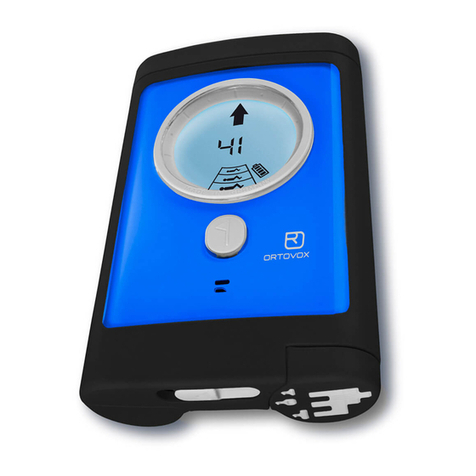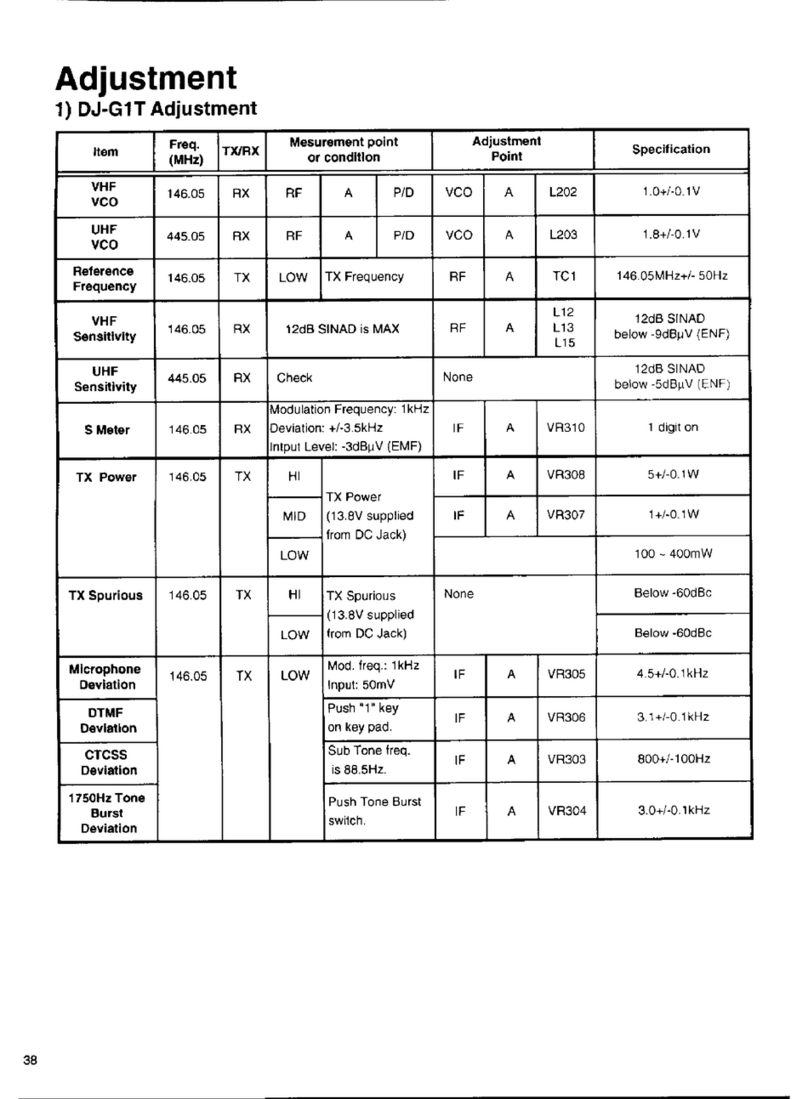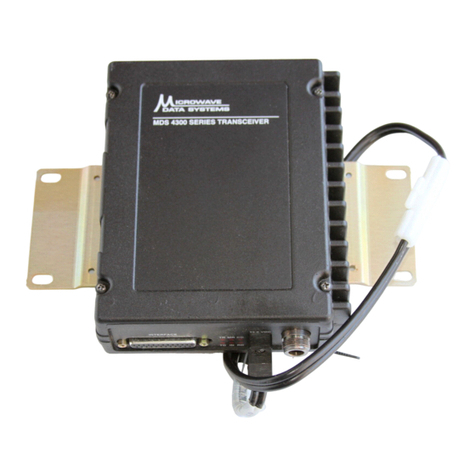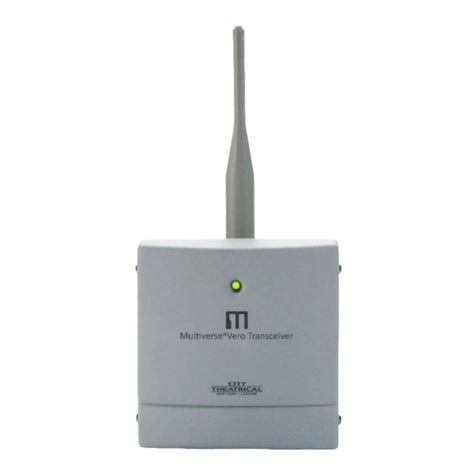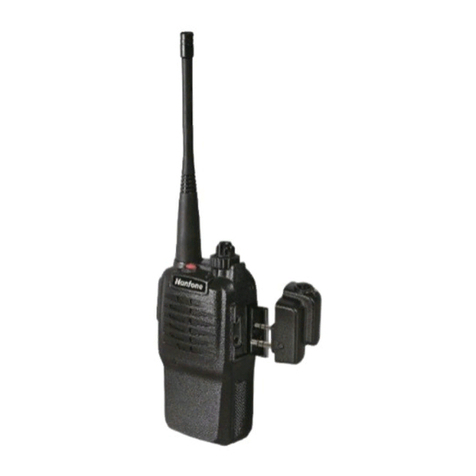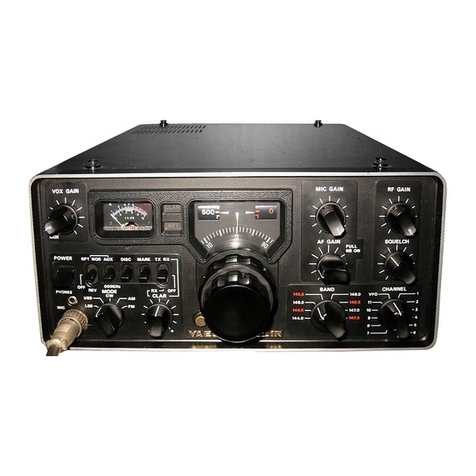Filser Electronic ATR500 Operating instructions

Filser Electronic GmbH •Gewerbestraße 2 •86875 Waal
phone: +49 8246 96 99-0 •fax: 08246 / 10 49 •web: www.filser.de
ATR500
P/N 500-(0XX)-(0XX)
P/N 500-(1XX)-(1XX)
VHF Communication Transceiver
Installation and Operation
Dokument-Nr.: 01.1251.010.71e
Revision: 1.06
Date: 27.07.2007

ATR500 INSTALLATION AND OPERATION
Dokument-Nr.: 01.1251.010.71e / Revision: 1.06
2
List of Changes
Revision
Date Description of Change
1.00 09.01.2006
initial version
1.01 07.02.2007
new chapter “Customer Support”
1.02 26.02.2007
Troubleshooting, if CON was misadjusted
1.03 21.03.2007
Description of equipment prior to
P/N 500-(1XX)-(1XX)
1.04 02.04.2007
microphones/headphones: parallel connection
1.05 30.05.2007
MIC setting completed
1.06 27.07.2007
External Fuse 4 A.
List of Service Bulletins (SB)
Service Bulletins have to be inserted into this manual and to be enlisted
in the following table.
SB No
Rev.
No Issue Date
Entry Date
Name

ATR500 INSTALLATION AND OPERATION
Dokument-Nr.: 01.1251.010.71e / Revision: 1.06
3
Contents
1
GENERAL.........................................................................................5
1.1
Symbols......................................................................................5
1.2
Customer Support.......................................................................5
1.3
Survey of Part Numbers..............................................................6
1.4
System Description.....................................................................6
1.5
Technical Data............................................................................7
1.6
Telecommunication Data ............................................................8
1.7
Environmental Conditions ...........................................................9
1.8
Scope of Delivery......................................................................10
1.9
Accessories ..............................................................................10
2
INSTALLATION ..............................................................................11
2.1
Unpacking.................................................................................11
2.2
Requirements ...........................................................................11
2.3
Antenna ....................................................................................12
2.4
On-Board Wiring .......................................................................12
2.4.1
Annotations.........................................................................12
2.4.2
Microphone Connection......................................................13
2.4.3
Headphone Connection ......................................................13
2.4.4
Display Illumination.............................................................14
2.4.5
Wiring Single-Seater...........................................................14
2.4.6
Wiring Double-Seater with Intercom....................................15
2.5
Microphone Settings .................................................................16
2.6
Installation Check......................................................................17
3
DRAWINGS....................................................................................18
3.1
Equipment.................................................................................18
3.2
Equipment Connectors..............................................................18
3.3
Panel Cut-out............................................................................18
4
OPERATION...................................................................................19
4.1
ON/OFF ....................................................................................19
4.2
INIT Menu.................................................................................20
4.2.1
MIC-setting .........................................................................20
4.2.2
Reset ..................................................................................21
4.3
Return-Mode (from P/N 500-(1XX)-(1XX)) ................................21
4.4
VOL, SQ, VOX, DIM, CON – Basic Settings .............................22
4.4.1
General...............................................................................22
4.4.2
VOL – Volume ....................................................................22
4.4.3
Squelch...............................................................................23
4.4.4
VOX – Threshold of Intercom Function...............................23
4.4.5
DIM – Background Illumination ...........................................23

ATR500 INSTALLATION AND OPERATION
Dokument-Nr.: 01.1251.010.71e / Revision: 1.06
4
4.4.6
CON – Contrast ..................................................................24
4.5
Frequency Setting.....................................................................25
4.5.1
Direct Input .........................................................................25
4.5.2
Select Frequency from Memory Position.............................25
4.5.3
Save new Frequency ..........................................................25
4.6
Automatic Frequency Checkup .................................................26
4.7
BAT – Low-Battery....................................................................26
4.8
Transmit Operation ...................................................................26
4.9
Receive Operation ....................................................................26
4.10
Controls ....................................................................................27

ATR500 INSTALLATION AND OPERATION
Dokument-Nr.: 01.1251.010.71e / Revision: 1.06
5
1 GENERAL
1.1 Symbols
Instructions whose non-observance can cause damage to
the device or other parts of the equipment.
Supplementary information.
1.2 Customer Support
For fastest handling of reshipments please use the reshipment form
available from our homepage www.filser.de.
Any suggestions for improvement of our manuals are

ATR500 INSTALLATION AND OPERATION
Dokument-Nr.: 01.1251.010.71e / Revision: 1.06
6
1.3 Survey of Part Numbers
No Part Number Description
1 P/N 500-(0XX)-(0XX)
prior to S/N 00301 04 no background illumination
2 P/N 500-(1XX)-(1XX)
from S/N 00301 04 background illumination adjustable in
the INIT Menu
3 P/N 500-(1XX)-(1XX) background illumination adjustable in
the normal Menu
1.4 System Description
•VHF Communication Transceiver for installation in aircraft
•operating frequency range from 118.000 to 136.975 MHz
•25 kHz channel spacing (760 channels)
•panel mounting in a 57 mm cut-out
•memory capacity for 9 user defined frequency entries
To avoid unintentional permanent transmit operation, the
transmitter automatically stops transmission after two
minutes of uninterrupted operation.

ATR500 INSTALLATION AND OPERATION
Dokument-Nr.: 01.1251.010.71e / Revision: 1.06
7
1.5 Technical Data
GENERAL
COMPLIANCE JTSO-2C37e, ED-23B Class 4
JTSO-2C38e, ED-23B Class C
TSO-C37d, RTCA DO-186A Class 4
TSO-C38d, RTCA DO-186A Class C
LBA.O.10.911/113 JTSO
DIMENSIONS Height: 61 mm (2,4 in)
Width: 61 mm (2,4 in)
Depth: 190 mm (7,4 in) behind Panel
WEIGHT 0,49 kg (1,1 lbs)
MOUNTING Panel mounting
OPERATING TEMPERATURE
RANGE -20
0
C .. +55
0
C, 30 minutes at +70
0
C
STORAGE TEMPERATURE RANGE
-55
0
C .. +85
0
C
POWER REQUIREMENTS 14 VDC (9 to 18 VDC)
CURRENT CONSUMPTION
Transmitter: 2,5 A
Receiver: 0,1 A (stand-by), max. 0,5 A
FUSE external fuse required: 4 A, slow blow
FREQUENCY RANGE 118,000 MHz .. 136,975 MHz
FREQUENCY STABILITY ±30 ppm
TRANSMITTER
POWER OUTPUT 6 W (nominal)
4 W (minimal)
MODULATION 70 % modulation capability limited to 98%
distortion < 10 % at 70 % modulation
SIDETONE OUTPUT 100 mW into 500 Ω(headphone)
MICROPHONE Standard microphone with 100 mVRMS
(MIC 1 or MIC 2)
or
dynamic microphone (MIC 1 switchable)
DUTY CYCLE 2 minutes on, 4 minutes off;
auto turn-off after 2 minutes of continuous
transmit operation

ATR500 INSTALLATION AND OPERATION
Dokument-Nr.: 01.1251.010.71e / Revision: 1.06
8
RECEIVER
RECEIVER SENSITIVITY 2,5 µV EMF (6 dB S+N/N, m = 30 % /1 kHz)
BANDWDTH -6 dB bandwidth > ±8.0 kHz
SELECTIVITY -40 dB bandwidth < ±17.0 kHz
-60 dB bandwidth < ±22.0 kHz
RECEIVER OUTPUT 4 W into 4 Ω(speaker output)
AGC CHARACTERISTICS AF output deviation < 3 dB
from 10 µV to 10 mV
SQUELCH automatic squelch (adjustable)
SPURIOUS RESPONSES > 80 dB
INTERCOM INPUT The microphone is connected to the
intercom input. 100 mVRMS at the
microphone input produce 100 mW output
power at the headphone output.
1.6 Telecommunication Data
Depending on your national telecommunications legislation, the following
data may be required when applying for the aircraft radio station license:
Manufacturer Filser Electronic GmbH
Type Designation ATR500
EASA Number LBA.O.10.911/113 JTSO
Transmitter Power Output 6 W
Frequency 118.000 – 136.975 MHz
Emission Designator 6k00A3E

ATR500 INSTALLATION AND OPERATION
Dokument-Nr.: 01.1251.010.71e / Revision: 1.06
9
1.7 Environmental Conditions
Characteristic DO–160D Section
Cat.
Condition
Temperature / Altitude 4.0
Low ground survival temperature 4.5.1 – 55°C
Low operating temperature 4.5.1 – 20°C
High ground survival Temperature 4.5.2 + 85°C
High Short-time Operating
Temperature 4.5.2 + 70°C
High Operating Temperature 4.5.3
C1
+ 55°C
In –Flight Loss of Cooling 4.5.4 Z No auxiliary cooling required
Altitude 4.6.1 C1 50,000 ft
Temperature Variation 5.0 C 2°C change rate mini
mum per
minute
Humidity 6.0 A
Shock 7.0 A
6 G operational shocks
20 G crash safety
Test Type R in all 6 directions
Vibration 8.0 S Vibration Curve M
Explosion Proofness 9.0 X No test required
Water Proofness 10.0 X No test required
Fluids Susceptibilities 11.0 X No test required
Sand and Dust 12.0 X No test required
Fungus Resistance 13.0 X No test required
Salt Spray 14.0 X No test required
Magnetic Effect
15.0 Z
< 0.3 m Compass Safe Distance
Power Input (DC) 16.0 B
Voltage Spike Conducted 17.0 A
Audio Frequency Conducted
Susceptibility 18.0 A
Induced Signal Susceptibility 19.0 A
Radio Frequency Susceptibility 20.0 TT
Emission of RF Energy 21.0 M
Lightning Induced Transient
Susceptibility 22.0 B3F
3
Lightning Direct Effects 23.0 X No test required
Icing 24.0 X No test required
Electrostatic Discharge (ESD) 25.0 A

ATR500 INSTALLATION AND OPERATION
Dokument-Nr.: 01.1251.010.71e / Revision: 1.06
10
1.8 Scope of Delivery
order no. description
ATR500 ATR500, 760 channel communication transceiver
01.1251.010.71e manual ATR500 „Installation and Operation“
EASA Form 1
1.9 Accessories
Maintenance Manual
Bestellnummer description
01.125.010.13e Maintenance Manual
Cable Looms
order no. description
BSKS500A cable loom with free ends for gliders
BSKS500E cable loom with free ends for airplanes
incl. connector set
BSKS500F cable loom with free ends for airplanes (with light).
without connector set
BSKS500U cable loom for ATR500 with 2 headset connectors and 1 PTT
BSKS500V cable loom for ATR500 with 2 headset connectors and 2 PTT
BSKSZUB connector set
ZSHM10 swan neck microphone
Antennas for Planes
order. no. description
SP100 folded-top antenna, alu, with 10 m antenna cable
SP2000 folded-top antenna, cable, BNC-jack
SP200010 antenna cable for SP2000, 10 m
Mobile Station
order. no. description
ZGS6 carrying bag (leather) incl. battery, antenna and mike
AL2000 charger
32023100 antenna
ZDHMGS6 dynamic hand-microphone
PNEGAK01 replacement battery 12V/6,5Ah for GS6/GS7

ATR500 INSTALLATION AND OPERATION
Dokument-Nr.: 01.1251.010.71e / Revision: 1.06
11
2 INSTALLATION
2.1 Unpacking
•Carefully unpack the equipment.
•Damages due to transport must be reported to the shipping
company.
•Save the shipping container and all packing materials to
substantiate your claim.
For storage or reshipment the original packaging should be
used.
2.2 Requirements
•In arrangement with an avionics shop, location and kind of the
installation are specified. An avionics shop can install all cables.
Refer to 1.9 Accessories for cable looms.
•The equipment is front-laterally fixed in the instrument panel in a
57 mm cut-out using four M4 screws (included in delivery).
•Leave sufficient space for the installation of cables and connectors.
•Avoid sharp bends and the routing of cables close to control
cables.
•Avoid installation close to heat sources.
•Care for adequate convection cooling.
Note 2.4.2 Microphone Connection BEFORE mounting!

ATR500 INSTALLATION AND OPERATION
Dokument-Nr.: 01.1251.010.71e / Revision: 1.06
12
2.3 Antenna
Use an omni-directional vertical polarized VHF COM antenna with a
50 Ohm impedance. Wideband comm antennas provide efficient
operation over the VHF communications band.
Installation recommendations:
•consider the manufacturer’s recommendations
•Mount the antenna in vertical position so on or under the belly that
it is as far distant as possible from all protruding parts (propeller,
chassis, vertical stabilizer).
•To avoid any mutual interference of the radios, the antenna
isolation between a voice transmission and a navigation antenna
as well as between double COM antennas should be as high as
possible. A separation of 2 meters usually is sufficient.
•The metallic contact between airplane surface and antenna must
be very good. On non-metallic airplanes a metal foil (min. 80 cm x
80 cm) shall be used as electrical counterweight on the inside of
the belly.
•For glider installation the internal antenna installed by the
manufacturer should be used.
2.4 On-Board Wiring
2.4.1 Annotations
•Keep wiring as short as possible.
•Avoid cable running near strong high frequency sources such as
ignition coil, generator or battery charger.
•Refer to 1.9 Accessories for cable looms.
•All cables can be installed by an aeronautical-engineering
enterprise.
•The cables must be approved for airplane installation.
•conductor cross-section:
opower, GND: AWG18 (0.96 mm²)
osignals: AWG22 (0.38 mm²)
•external slow-blow fuse (4 A) required.

ATR500 INSTALLATION AND OPERATION
Dokument-Nr.: 01.1251.010.71e / Revision: 1.06
13
2.4.2 Microphone Connection
Microphone inputs:
MIC 1: switchable („Mic Switch“on the right side of the equipment) for
•dynamic microphones (factory setting)
•standard microphones
MIC 2: only for standard microphones
The input for standard microphones is appropriate for input voltages of
50 mVpp to 2 Vpp. This input has a bias voltage of 8 V at 330 ohms.
Sensitivity is adjustable in the init menu with MIC.
The input for dynamic microphones is appropriate for input voltages of
5 mVpp to 10 mVpp. This input has no bias.
Use microphones of the same type, since the settings described in the
following are always concerning both microphone inputs.
Check setting of the MIC switch on the right side of the
radio BEFORE mounting!
(Factory setting: dynamic microphone)
Two microphones may be connected parallel per
microphone input.
2.4.3 Headphone Connection
Headphones may be connected parallel as long as the total impedance
doesn’t fall below 8 Ω.

ATR500 INSTALLATION AND OPERATION
Dokument-Nr.: 01.1251.010.71e / Revision: 1.06
14
2.4.4 Display Illumination
From No 2 of 1.3 Survey of Part Numbers!
„DISPLAY_LIGHTING“ (Pin 4) must be connected according to the
desired function:
•GND illumination off
•+UB illumination on
•dimmer illumination external adjustable
•switch illumination external switchable
If pin 4 is connected to an external voltage supply, illumination can be
adjusted by the DIM function (refer to 4.4.5, page 23).
2.4.5 Wiring Single-Seater
Cable loom BSKS500A
DISPLAY_LIGHTING: Refer to 2.4.4 for connection.

ATR500 INSTALLATION AND OPERATION
Dokument-Nr.: 01.1251.010.71e / Revision: 1.06
15
2.4.6 Wiring Double-Seater with Intercom
Cable Looms:
BSKS500U: 1 PTT button; BSKS500V 2 PTT buttons.
DISPLAY_LIGHTING: Refer to 2.4.4 for connection.

ATR500 INSTALLATION AND OPERATION
Dokument-Nr.: 01.1251.010.71e / Revision: 1.06
16
2.5 Microphone Settings
Settings of MIC- und VOX-values are essential for intercom operation.
Using VOX the threshold level is adjusted so that usual flight noise is not
transmitted to the headphones, but only an additional signal caused by
speaking will start intercom operation.
With very strong background noise or uncompensated microphones VOX
can be deactivated by setting VOX01.
In this case intercom is activated using a press-to-talk key (PTT), which
connects pin 12 (intercom) of the equipment connector to GND. If
required, e. g. in a tandem cockpit, use two parallel connected PTT keys.
For operating in VOX mode pin 12 has to be connected permanently to
GND.
Transmission merely operates when PTT is pressed.
The suppression of background noise is only possible using differential
microphones, as they are usual with modern headsets. Normal electret
microphones are not suitable.
For setting refer to 4.2.1 MIC-setting.

ATR500 INSTALLATION AND OPERATION
Dokument-Nr.: 01.1251.010.71e / Revision: 1.06
17
2.6 Installation Check
When installation is completed all steering and control functions of the
aircraft are to be examined, in order to exclude disturbances by the
wiring.
Subsequently, check antenna matching. Insert a standing wave meter,
respectively a direction-sensitive RF power meter into the antenna line.
Determine standing wave ratio (SWR) over the entire operating
frequency range. The SWR shall not exceed 3:1 (the reflected power
shall not exceed 25% of the forward power). If this value is exceeded, a
mismatching is present, which can be caused e. g. by incorrect or
insufficient electrical counterweight, bad contacting or incorrect radiator
length.
With COM antennas attached on the fuselage lower side
this measurement must be accomplished during flight, in
order to avoid faulty measurements.
After the antenna measurement a communication test with an
aeronautical station shall be accomplished.
Furthermore a test flight is recommended, in order to guarantee the
proper in-flight operation of the radio:
•In a flight altitude of at least 1500 ft contact a ground station in a
distance of at least 100 km (60 nautical miles).
•Pay attention to unusual electrical interference.
•If possible, perform the radio test on frequencies within the upper
and lower VHF communication frequency range.

ATR500 INSTALLATION AND OPERATION
Dokument-Nr.: 01.1251.010.71e / Revision: 1.06
18
3 DRAWINGS
3.1 Equipment
23 mm
18 mm
61 mm
61 mm
163 mm
3.2 Equipment Connectors
Ca. 70 mm
3.3 Panel Cut-out
Not full scale!

ATR500 INSTALLATION AND OPERATION
Dokument-Nr.: 01.1251.010.71e / Revision: 1.06
19
4 OPERATION
For figure of controls refer to page 27.
4.1 ON/OFF
•power on: press about 0,5 s
•power off: press about 3 s
Display after power on
ATR500
V2.5
device type
software release
Afterwards one of the following viewings appears, depending on the
position of the MEM switch:
118.00
>118.00
active frequency
stand-by frequency
or
118.00
M3
active frequency
memory position
At power on the last settings are used.

ATR500 INSTALLATION AND OPERATION
Dokument-Nr.: 01.1251.010.71e / Revision: 1.06
20
4.2 INIT Menu
The INIT Menu contains
•MIC Setting (microphone level)
•reset to factory settings
•contrast (previous to P/N 500-(1XX)-(1XX), refer to 4.4.6)
Call INIT Menu: keep pressed
at power on
Key Assignment:
EXIT: VOL/SQ
MIC: STORE
INIT:
CON:
4.2.1 MIC-setting
The MIC level simultaneously effects MIC 1 and MIC 2. Therefore two
equivalent standard microphones must be used to ensure successful
intercom operation.
•For setting MIC, VOX previously must be set to 5 (refer to 4.4.4).
•select MIC: press STORE
EXIT
MIC:05
MIC:nn, nn = 01 .. 32
•set level: turn VOL
lowest sensitivity: MIC01
usually setting for avionic headsets: 01 .. 05
The microphone level can be adjusted using headphones: With
engine running talk loud and clearly and vary MIC until VOX
switches on and off satisfactorily.
•exit: press VOL/SQ
Table of contents
Other Filser Electronic Transceiver manuals


